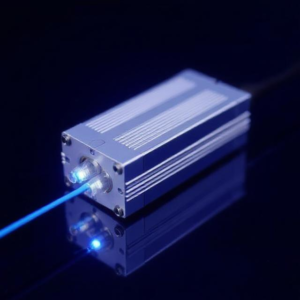What is Wavelength Division Multiplexing (WDM)?
Wavelength Division Multiplexing (WDM) is a technique used in fiber-optic communication systems to send multiple signals over a single optical fiber at the same time. It works by using different wavelengths (or colors) of light to carry different signals.
Think of it like a highway with multiple lanes. Each lane (wavelength) carries its own traffic (signal). Instead of building more roads, WDM allows all the signals to travel on the same fiber-optic cable by assigning them to different wavelengths (like different colors of light).

How Does WDM Work?
- Different Wavelengths:
- In WDM, each signal is carried by a different wavelength of light. Wavelengths are just different colors of light, which can be combined and sent through the same optical fiber.
- Multiplexing the Signals:
- All these signals, each on its own wavelength, are combined (or multiplexed) into one signal and sent together over the same fiber-optic cable.
- The signals travel simultaneously but don’t interfere with each other because they are on different wavelengths.
- Demultiplexing at the Other End:
- When the combined signal reaches the other end, a demultiplexer separates the signals again based on their wavelengths. Each signal is sent to its correct destination.
Simple Analogy:
Imagine you are in a city with one tunnel (the optical fiber) that cars (signals) have to pass through. But instead of using only one lane for all cars, you give each car a different color (wavelength). Each car travels in its own lane (wavelength), so even though they all go through the same tunnel (fiber), they don’t get mixed up.
When the cars reach their destination, the tunnel exit (receiver) sorts them by color (wavelength) and sends them to the correct parking lot (destination).
Types of WDM
There are two main types of Wavelength Division Multiplexing:
1. Dense Wavelength Division Multiplexing (DWDM)
- What it is: DWDM uses a large number of tightly packed wavelengths, meaning it can send a lot of data over a single fiber.
- How it works: DWDM allows hundreds of different wavelengths to be multiplexed together on the same fiber. The wavelengths are very close together, so it can carry huge amounts of data at once.
- Use: DWDM is used in long-distance communication, such as undersea cables or high-capacity backbone networks.
2. Coarse Wavelength Division Multiplexing (CWDM)
- What it is: CWDM uses fewer wavelengths and the wavelengths are more spaced out compared to DWDM.
- How it works: CWDM has a smaller number of wavelengths, which makes it less complex and cheaper to implement.
- Use: CWDM is often used in shorter distances and in metro networks (local or regional connections).
Why is WDM Important?
- Increases Bandwidth:
- WDM allows multiple signals to be transmitted simultaneously over the same fiber-optic cable, increasing the amount of data that can be sent without needing more fibers.
- Efficient Use of Fiber:
- Since fiber-optic cables can carry signals in the form of light, using WDM maximizes the potential of the fiber by sending multiple signals at once, which would otherwise require more cables or resources.
- Cost-Effective:
- Instead of laying down new fiber-optic cables, WDM makes it possible to transmit much more data through existing cables, saving on infrastructure costs.
- Supports High-Capacity Networks:
- WDM is crucial in today’s internet infrastructure, especially for handling large amounts of data like internet traffic, video streaming, or cloud services.
Example of WDM in Use:
Imagine a data center or internet backbone that needs to send data across long distances. Instead of using many separate fibers for each stream of data, WDM allows multiple data streams to travel together on a single fiber by using different wavelengths (colors of light). This means more data can travel faster and more efficiently through the same fiber, reducing the need for physical cables and boosting overall network capacity.
Summary:
- Wavelength Division Multiplexing (WDM) allows multiple signals to travel through a single optical fiber by using different wavelengths (colors) of light.
- The signals are multiplexed at the sending end (combined together) and then demultiplexed at the receiving end (separated and sent to their correct destinations).
- WDM helps increase data transmission capacity, makes better use of fiber-optic cables, and is essential for high-capacity internet and communication networks.
Types of WDM:
- DWDM (Dense Wavelength Division Multiplexing): Lots of tightly packed wavelengths, used for high-capacity, long-distance transmission.
- CWDM (Coarse Wavelength Division Multiplexing): Fewer wavelengths, used for short-distance, lower-cost transmission.
In short, WDM is a powerful tool for making fiber-optic networks more efficient, enabling high-speed data transfer across the globe.











